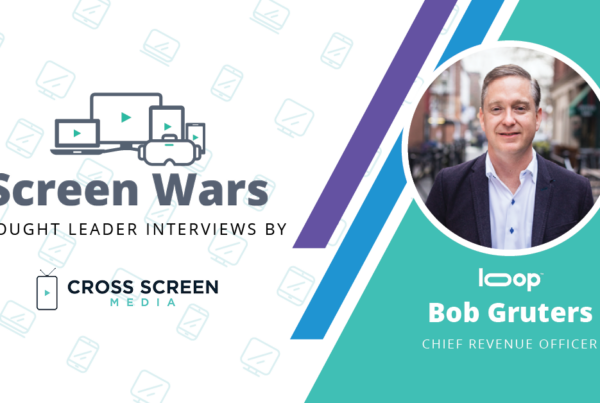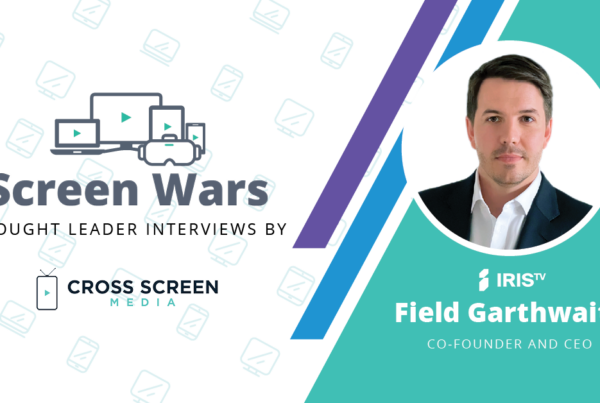John Battelle, CEO and Co-Founder at The Recount, joins Cross Screen Media to share his unique insights on the latest developments, trends, and challenges across the Convergent TV Space in our latest Screen Wars Thought Leader Interview.
What was your first job and what lessons did you take from it that you have applied in your career?
Right out of college I worked as an intern, then a full-time reporter for a trade magazine that covered Apple and its ecosystem of products – from networking to storage to software. Like many in the early Apple days, I was obsessed with the impact of the Mac on society. I learned how to understand and analyze digital technologies, how to tell complicated stories quickly and efficiently, and my sources and colleagues in the industry went on to be key players in the digital revolution that followed during the 1990s. That, of course, set up the rest of my career, which for the most part has been about telling the story of how technology intersects with society. Today that intersection is deeply political.
What is the biggest change you have seen in the video ad marketplace in recent years?
Probably the slow (far too slow) rise of “connected TV.” It’s a testament to how entrenched old habits and models can be. Intellectually it just makes sense to bring the television marketplace into the digital world, but the industry has fought it – sometimes openly, more often through a more structural aversion to change. I also think the impact of the big platforms (YouTube, Facebook, Netflix etc.) on video advertising has been profound – skippable sixes, microsecond video views, and the contraction of the “linear” TV model is forcing brands to imagine new approaches to telling their stories, and that shift has yet to fully play out. One more thing: I never thought marketers would let the big platforms grade their own homework when it came to video. I was wrong.
How have you and your company(s) adapted to this change?
The Recount is very new, has grown remarkably quickly, and we bring no baggage around “this is how we should do it” – we don’t have sunk investment in old approaches to content, audience building, or marketing partnerships. The video landscape is an utter Rorschach right now – it’s so diverse you can pretty much see whatever you want to see in it. It’s an exciting time to be an agile, video-driven journalism brand. We’re absolutely convinced that video journalism has to be rethought from the bare metal up. And we’re structured in a way to allow us to execute that mission. The most important thing is to be responsive, and not get over your skis with a particular business model or platform partner.
Which development(s) are you most excited about within the Convergent TV space? Why?
It’s always the Holy Grail: Understanding who your audience is, matching them to your own data, and 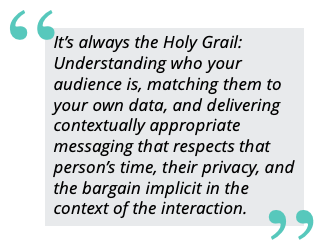 delivering contextually appropriate messaging that respects that person’s time, their privacy, and the bargain implicit in the context of the interaction. Our business isn’t fully provisioned to do this quite yet, and some key players are hoarding data and acting like old school monopolists, but overall we’re moving inevitably in the right direction. As always, the first movers here are going to gain significant advantages.
delivering contextually appropriate messaging that respects that person’s time, their privacy, and the bargain implicit in the context of the interaction. Our business isn’t fully provisioned to do this quite yet, and some key players are hoarding data and acting like old school monopolists, but overall we’re moving inevitably in the right direction. As always, the first movers here are going to gain significant advantages.
Digital video ad spending is poised to surpass linear TV ad spending. Within linear TV, targeted ads (beyond age+gender) are rapidly gaining share. How should the different players in the industry capitalize on these shifts?
Push in! Back when the Internet ad space was nascent, the companies and leaders who committed early and consistently gained an unfair experiential advantage. If you look across the leadership of major brand marketers, agencies, and technology platforms, the majority are people who drove digital marketing into their companies back in the late 90s through early 2000s. The same kind of shift is happening in television, and folks who push in now will be running the industry in ten years.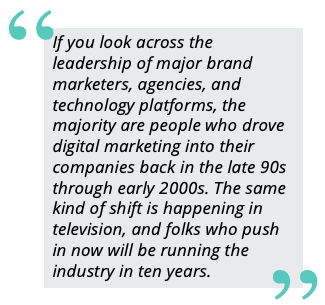
With ongoing cord-cutting, what strategies should linear TV ad buyers and networks employ to drive business?
First off, can we just stop calling linear TV “linear”? Please?! Because linear TV is now just a feature of a digitally enabled infrastructure. I don’t have a ton of advice for folks involved in programming traditional approaches to television – that’s not where I live. But anyone clinging to that model (and attempting to wring the last pennies of profit from it) should study the transition that is now complete in the music business. Streaming won and the landscape was utterly refactored. New players took control of the audience relationship. The most important thing to ensure innovation continues is that we have a healthy competitive landscape. I’m not entirely optimistic about that…
Many organizations have split their digital video and linear TV ad planning into two separate teams. In recent years, some organizations have moved to a more centralized model. Where do you think organizations should be headed in structuring their media planning/buying teams?
It’s critical that buyers have deep knowledge of the channels where they play, but we should be able to walk and chew gum as an industry – no one should work in an informational silo. The issues are no longer technological, they are anthropological – we’re in our own way here. I can’t imagine a strong argument for not have a strong centralized information sharing function across channels – that’s how we get to that Holy Grail. That doesn’t mean that function has complete executive power. But whoever does have that power should support a centralized, quality information infrastructure, and everyone with information assets and/or needs in an org should participate.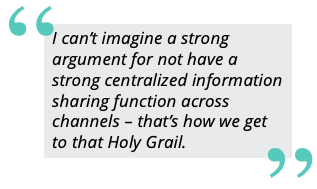
Coming out of all the great conversations you led at the P&G Signal conference, what was the most interesting/surprising takeaway you had?
Wow, that’s a tough one, given there were 35+ speakers over two days, and nearly 10K registrants from more than 75 countries. What struck me the most was how powerful a “virtual” platform can be if you really work hard at making the production native to the reality of your audience. Our NPS on the event leapt up more than 15 points up from the prior year – and it was already a really strong number back then. From a content/programming standpoint, the strong commitment to the role business plays as a leader in society was front and center. I’m proud to partner with P&G in this work – the company really walks its talk.
See the rest of the Screen Wars Thought Leader Interview series here!
Mr. Battelle is co-founder and CEO of Recount Media Inc., a NY-based media platform. He also serves as chairman of the board at sovrn Holdings, LLC and a Director at LiveRamp, an NYSE listed company. In addition, he is Adjunct Professor and Senior Research Scholar at the School for International and Public Affairs at Columbia University. He previously was founder and CEO of six media and technology companies, including Federated Media, the Industry Standard, and Wired. In 2005, Mr. Battelle wrote “The Search: How Google and Its Rivals Rewrote the Rules of Business and Transformed Our Culture” (Penguin/Portfolio). Mr. Battelle holds a bachelor’s degree in anthropology and a master’s degree in journalism from UC Berkeley. For more information on The Recount please visit their website.
Cross Screen Media is a marketing analytics and software company helping brands, agencies, and networks succeed in the Convergent TV space. Our platform creates a common currency across linear TV, digital, and CTV views so ad buyers can build a single optimized plan and sellers can prove the value of their inventory. For more information, please visit our website.


